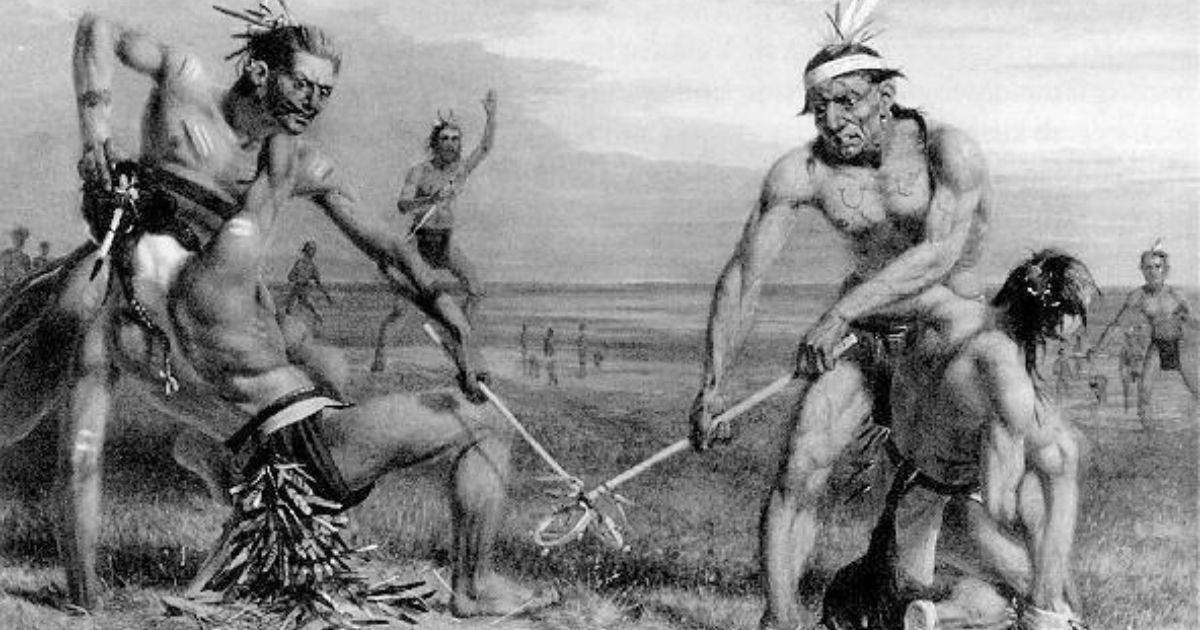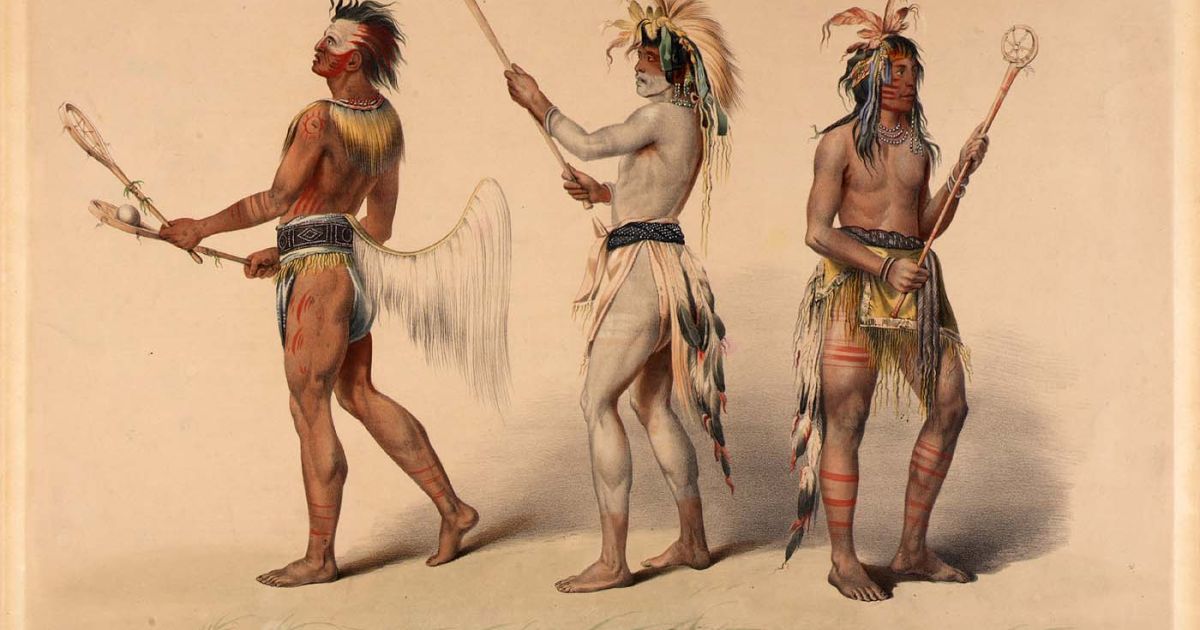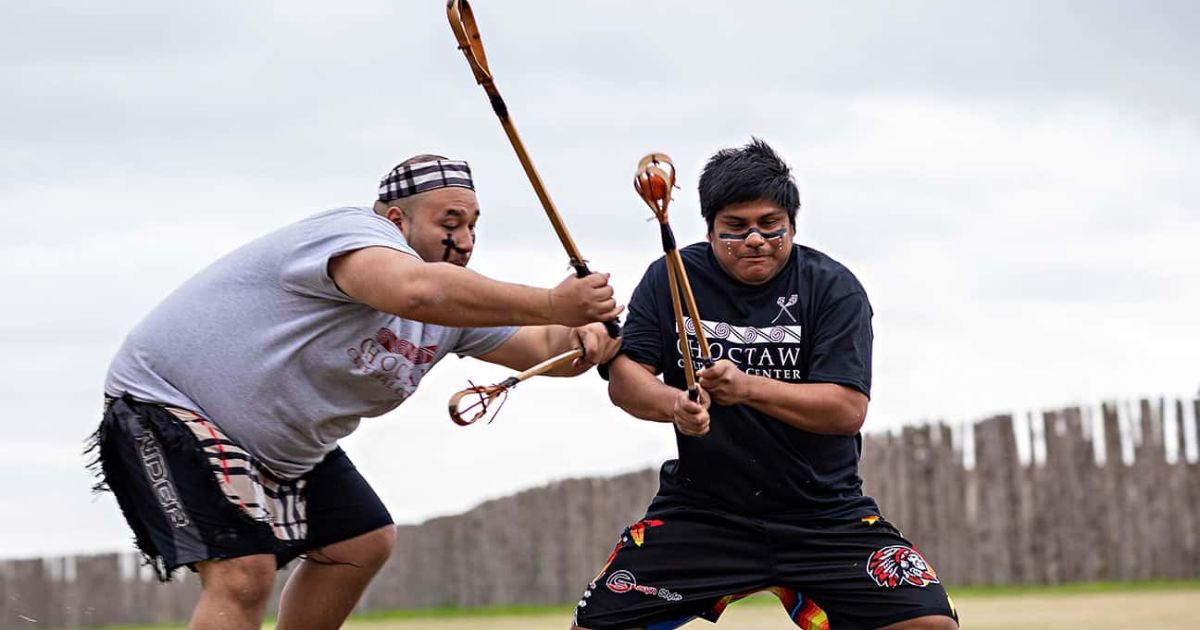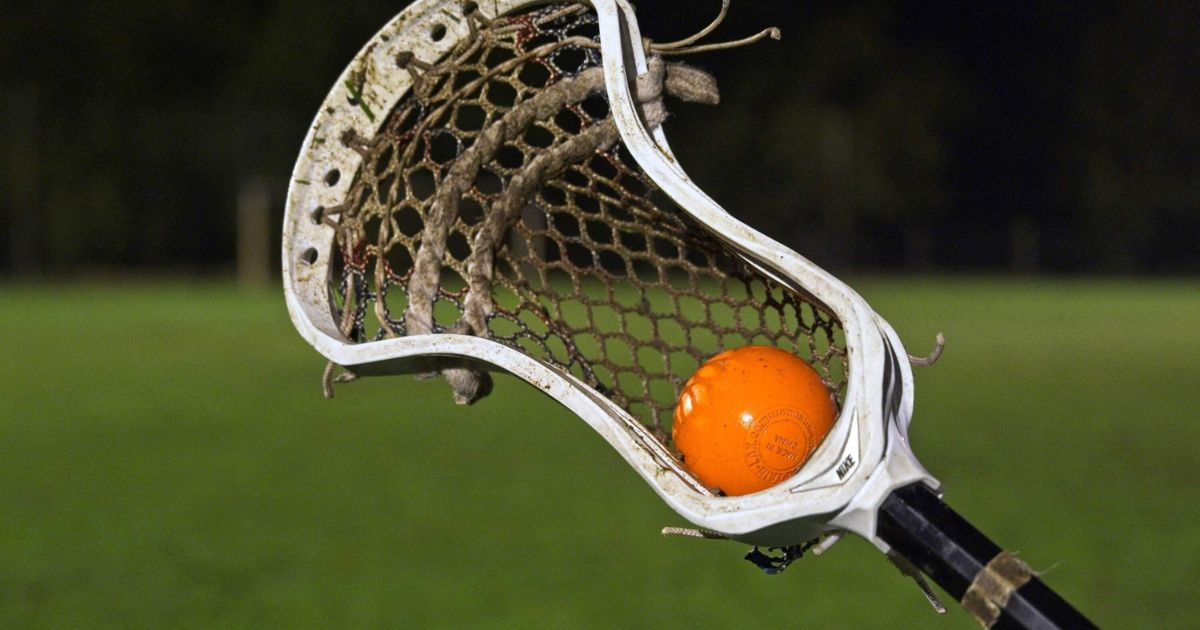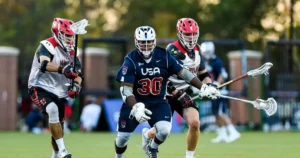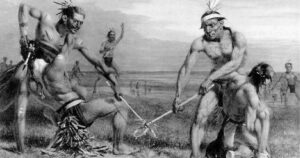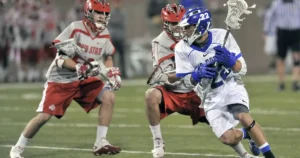Lacrosse is a team sport that was first played by Native American tribes in what is now the United States and Canada. The Native American version of lacrosse originated hundreds of years ago. Tribes played lacrosse in different ways, but the games all involved using handmade sticks with baskets on the end to catch, carry, and throw a small ball or other object.
Where did lacrosse originate? From its earliest beginnings, lacrosse originated with the Native American tribes inhabiting North America long before European settlers arrived. The indigenous tribes played various forms of stickball games using handcrafted equipment.
Lacrosse traces its origins back to the Stickball games played by Native Americans. Different tribes played their own unique versions, but they all centred around using sticks with pouches to handle a ball and scoring by getting it into a goal. As contact with European settlers increased, their influences gradually shaped lacrosse into its current form.
How Lacrosse Is Played?
Lacrosse is played with two teams aiming to score goals by throwing a solid rubber ball into the opposing team’s goal using sticks with a webbing pocket on the end. Players pass, catch, and carry the ball up and down the field as they attack and defend.
Matches take place on a large grass or artificial turf field with goals at each end. Teams consist of ten players who take on specialised roles like attackers, midfielders, defenders and a goalkeeper. Games have four 15-20 minute quarters with the aim being to outscore the other team.
Positioning Of Lacrosse
In men’s lacrosse, there are ten players per team on the field – three attackers, three midfielders, three defenders and a goalkeeper. Attackers try to score goals, midfielders transition between offence and defence, defenders prevent scoring, and the goalie blocks shots.
Women’s lacrosse involves 12 players per team – five attackers, four midfielders, two defenders and a goalkeeper. The positioning and roles are similar but adapted for the extra field player. Specific zones determine where each set of players operate.
The History Of Lacrosse
Lacrosse originated among Native American tribes who played various games of stickball hundreds of years ago in what is now the United States and Canada. Each tribe had their own versions with unique rules, rituals, gear and number of players. Lacrosse developed as European settlers began observing and taking part in these contests in the 1800s, bringing organized rules and equipment changes.
The table below shows key milestones in the development of modern lacrosse:
| Year | Event |
| Pre-1800s | North American tribes play traditional forms of stickball |
| 1839 | Rubber lacrosse ball used in game in Montreal |
| 1867 | National Lacrosse Association formed in Canada |
| 1970s | Women’s lacrosse grows in popularity |
| Now | Lacrosse played internationally |
As seen above, lacrosse evolved from the native stickball games of North America’s indigenous tribes to become a globalised sport through cultural exchanges and equipment and rule standardisation from European influence.
The Founding Of The Lacrosse Club
Lacrosse clubs and leagues began forming in the late 1800s after the establishment of standard rules. This allowed organised competition rather than informal tribal contests. Clubs were founded by settlers, universities, and community groups across northeastern U.S. and Canada’s eastern provinces.
One of the most famous early lacrosse clubs was the Montreal Lacrosse Club, established in 1856. This club was instrumental in standardising the modern rules adopted by Canada’s National Lacrosse Association. Other notable early clubs include New York’s Seneca Indians club and the Liverpool Lacrosse Club founded in England.
Lacrosse started through cultural diffusion
As Europeans settled in North America and came into increased contact with Native American tribes, they began participating in and influencing the indigenous stickball games that would eventually evolve into lacrosse. The diffusion of culture and ideas contributed to lacrosse’s development.
The exchange between Native Americans and European settlers allowed stickball to transform into early forms of lacrosse, including innovations like rubber lacrosse balls and metal sticks. Wondering, Long Is A Lacrosse Game. Learn more about the sport’s evolution, from ritualized contests to organized competition with standardized rules.
Lacrosse evolved from Native contests
Before lacrosse became an internationally played standardized sport, Native American tribes across eastern North America played various forms of stickball games between tribal communities and villages. These early stickball contests, played with handcrafted equipment, formed the foundations from which modern lacrosse evolved.
Tribal stickball involved large scale games, sometimes featuring over 100 players a side from neighbouring villages. There were few rules and a great deal of physicality as contests were held to prepare for war, as part of spiritual rituals, entertainment, and for conflict resolution.
As European influences grew, stickball added elements like limits on player numbers, standardised equipment, established rules and regulated competitions. This marked lacrosse’s origins as an evolution from ancient tribal contests into a more organised and modern game.
Lacrosse originating from ancient stickball
Lacrosse traces its early origins back to a variety of stickball games played by Native American tribes before European contact. Ancient stickball saw each tribe play unique versions of the game with different rules, rituals, number of players, field sizes and types of homemade equipment.
Despite variations, common elements were two teams competing to score goals using sticks featuring baskets or nets to catch, carry and throw a hand crafted ball. The foundations of lacrosse originate from these traditional stick and ball games first played across eastern North America by indigenous peoples hundreds of years ago. Ancient stickball’s rich history allowed it to evolve into early forms of modern lacrosse.
Lacrosse developed from ancestral games
The conventional game of lacrosse played worldwide today was preceded by the informal ancestral stick sports of Native Americans. Well before European settlement, a wide array of stickball games with spiritual and cultural significance were played across eastern North America tribes.
These primitive stick and ball contests were forerunners that lacrosse later developed from. Tribal stickball’s deeply-rooted origins provided the building blocks that allowed lacrosse to grow into an organised mainstream sport after the diffusion of European influences, equipment innovations, codified rules and regulated leagues.
Lacrosse inspired by tribal recreation
Lacrosse originated based on the recreational games of Native American tribes who would play various informal stickball contests between tribal communities for entertainment and preparation for war across eastern North America. Observations of the ball and stick skills of tribal stickball by European settlers later inspired attempts to adopt Indian equipment into their own sporting pastimes in early forms of organised lacrosse.
As cultural diffusion increased, lacrosse itself inspired more formal competition. Native American recreational stick games saw large scale events with hundreds of players. The athleticism and spirit of competition displayed inspired the growth of lacrosse’s rules, leagues and mainstream popularity as a standardised sport based on an ancient tribal recreation.
Lacrosse’s source as native activity
The historical source of modern lacrosse was as a Native American activity. Long before Europeans settled North America and systemized lacrosse into its current form, tribes across the eastern half of the continent had been playing stickball games for centuries.
Though rules and gear differed between tribal versions, stickball served recreational, spiritual and cultural needs. Young boys would fashion sticks and balls to play, villages held ritual events, and adjacent communities came together in massive contests. From these informal native stick sports came the foundations from which standardised lacrosse originated.
Lacrosse inherited from North American tribes
Modern lacrosse originated from traditional stickball, itself an informal game inherited from North America’s ancestral tribes and passed down through generations as part of native culture. Well before European settlers made contact, eastern tribes played communal ball and stick games with deep spiritual, military and recreational significance.
Europeans eventually adapted the chaotic tribal stick sports by introducing standardised rules and equipment. But lacrosse’s origins inherited from North America’s Native American peoples were maintained as founding principles of the game. The inheriting and evolution of native stickball is what allowed the creation of organised mainstream lacrosse from its indigenous beginnings.
FAQ’s
What is the creation story of lacrosse?
Lacrosse was created centuries ago as a Native American tribal contest using sticks and balls that eventually evolved into a standardised sport after contact and cultural exchange with European settlers.
Who came up with the game of lacrosse?
The game of lacrosse originated with the indigenous peoples of North America, particularly the Haudenosaunee (Iroquois) Confederacy.
how did lacrosse get its name
Lacrosse got its name from the French term “crosse”, meaning stick or staff, as the sport involves players using a stick with a net to carry and catch the ball.
Conclusion
In the quest to uncover lacrosse’s roots, it becomes evident that the origins of the sport trace back to the Indigenous peoples of North America. Centuries ago, various Native American tribes played different versions of lacrosse as a part of their cultural and spiritual practices.
As European settlers encountered this captivating game, it gained popularity and evolved over time into the modern sport we know today. The journey of lacrosse’s origin is a fascinating exploration of cultural exchange and adaptation, highlighting the rich history embedded in the sport’s beginnings among Indigenous communities.
